Introduction
Water isn’t just a part of life. For the people Water of Life (a Set Free Division) serves, water is life. Without access to reliable, clean water – human beings simply can’t survive. So, we’re on a mission to bring fresh water to every man, woman, and child. But our work doesn’t stop there. We go far beyond the water well to reach the village as a whole through improved education and job opportunities with the ultimate goal of bringing the village into relationship with Jesus Christ.
About Set Free’s Water of Life Initiative

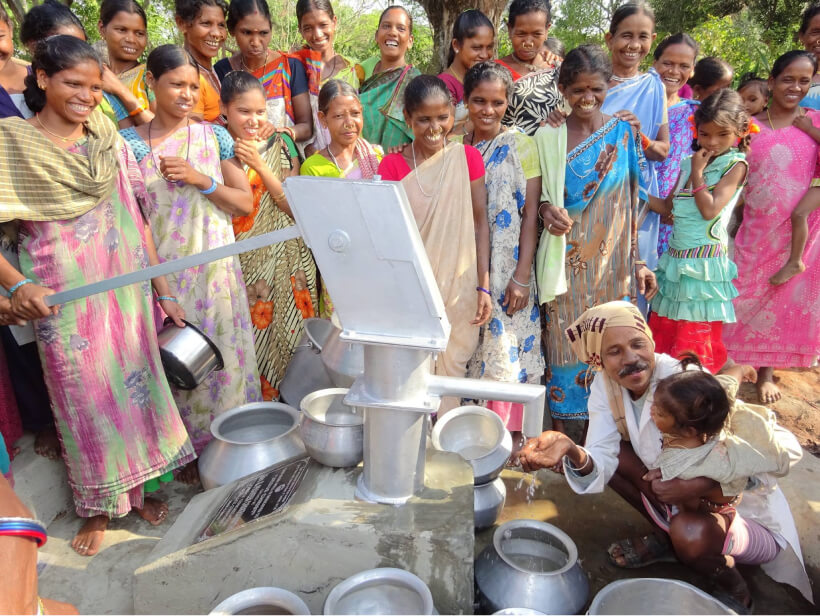

Water of Life
The Dirty Water Problem
It’s a gift that so many of us take for granted, but access to clean water is something that around 844 million people in the world don’t have. That’s a lot of people and we want to give you a little context in how we arrived at the number.
UNICEF in combination with the World Health Organization (WHO) researches and monitors the global water crisis. In 2017, they released an updated report through the Joint Monitoring Programme (JMP), and for the first time ever shared updated standards of measuring progress towards solving the global water crisis. This will add consistency as we all work together towards the goal of every person having access to clean water. This new standard defines basic water service as having access to an improved water source that can be accessed within 30 minutes including waiting time.
Using this new definition, we learned that:
 771
771  159
159 For these 844 million people, lack of access doesn’t just alter their lives but can impact all aspects of their village including overall health, equality, and education.
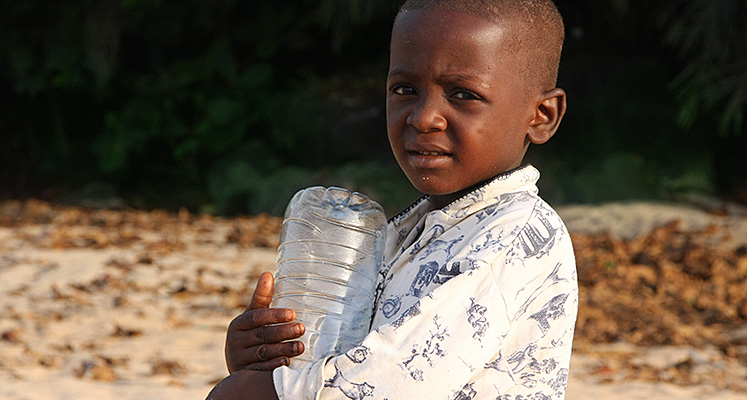
Health Impacts
- Water-borne diseases kill more children under the age of 5 each year than malaria, measles, and HIV/AIDS combined.
- 80% of all illness in the developing world comes from water-borne diseases.
- 6 to 8 million people each year in developing nations will die from preventable, water-borne diseases – with the majority of these being children.
840,000 of those will die from diarrhea alone.
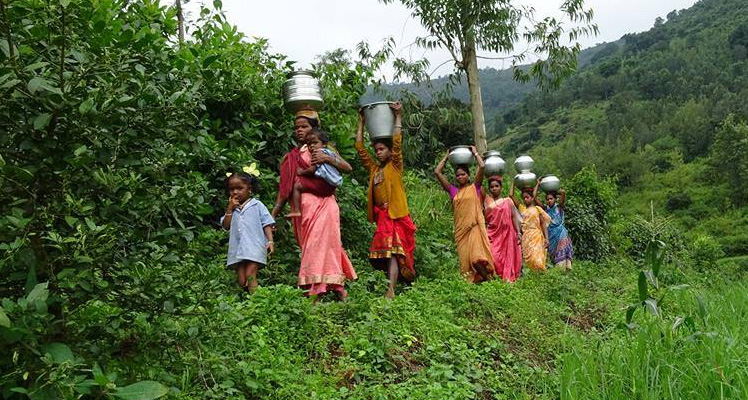
Equality
The average African family uses only 5 gallons of water a day, while the average American family uses 100. The 5-gallon container that a family will use for the day weighs 40 pounds. The physical act of water collection most often falls on the shoulders of women and children. These women and children are charged with the task of walking to their water source far from home - the average distance is 3.75 miles roundtrip! (read more here) They are the ones most affected by lack of clean water, and the ones most quickly affected when clean water is brought to their village.
- By some estimates, the collective time in one year that women and girls spend collecting water across sub-saharan Africa is equal to the labor hours completed by the entire workforce of France (about 40 billion hours).
- In India, if women were able to spend their time on income generating activities instead of water collection, the national GDP of that county would be an estimated 10 billion rupes ($160 million) higher.
The physical journey to collect water is oftentimes not safe. Trails may be steep, slippery, or strewn with rocks. Women also regularly make the trip in groups to protect themselves from the risk of being assaulted. This is a lot of work just to collect water that is often contaminated.
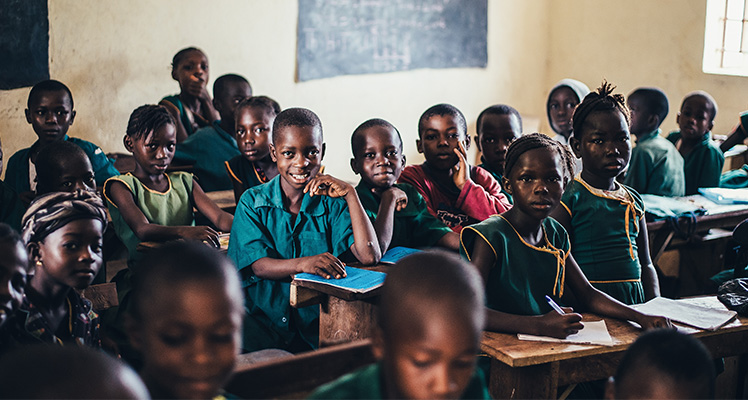
Education
It is almost impossible for a child to receive a quality education when they do not have access to clean water. The physical act of collecting this dirty water takes hours out of a child’s day. And often these children fall ill from the very water they worked so hard to collect. Without a consistent education, illiteracy rates in villages soar and future job prospects are limited. This often perpetuates the cycle of poverty seen in villages without an improved water source.
Lakshmi, a 9-year-old girl in India, experienced this first-hand:
I loved going to school. All my teachers encouraged me and told me how smart I was. I dreamed of becoming a doctor one day. But all of that changed when the water system in my village broke. We began relying on the irrigation system nearby, but it was so polluted with fertilizers and pesticides – we were left with rashes on our skin.
We found a river about an hour’s walk away where we could collect our water. My father couldn’t go. He worked in the fields nearby. If he missed time from work, he didn’t get paid. My family relied on his income to buy our food, and we were barely getting by. My mom recently had my youngest sister. She was still nursing and wasn’t yet strong enough to carry the heavy container of water. So, I had to do it. I didn’t always mind the walks. A lot of my friends had to go too, so we stuck together and told stories. But the trip back was awful. The water jug was so heavy. It hurt my neck a lot. If I ever spilled any along the way, I had to start all over. But the worst part was the fact I was no longer able to go to school. There were many nights I cried while my brothers worked on their homework. I saw my dreams of becoming a doctor slowly slipping away.
Creating a ripple
The Clean Water Solution
The widespread effects of dirty water are daunting, but fortunately the solution is simple. By providing a village with clean water there are some immediate impacts. Giving clean water allows a mother the ability to keep her children healthy, away from disease-ridden water that contaminates and pollutes. It gives a daughter the chance to go to school instead of walking for miles, wasting hours each day to provide water for her family. A newly drilled well gives a son the freedom to dream—and to learn a trade that will help prosper his village. Fathers receive a sense of dignity, pride, and purpose. Through the well, all are given the chance to know God and his love for them.
While our mission is simple—to provide clean, fresh water to the unreached and untouched across West Africa and India—the truth is that our impact stretches far beyond water. Realizing this, Water of Life commits to five crucial points of impact that we constantly strive to provide with every well we drill.
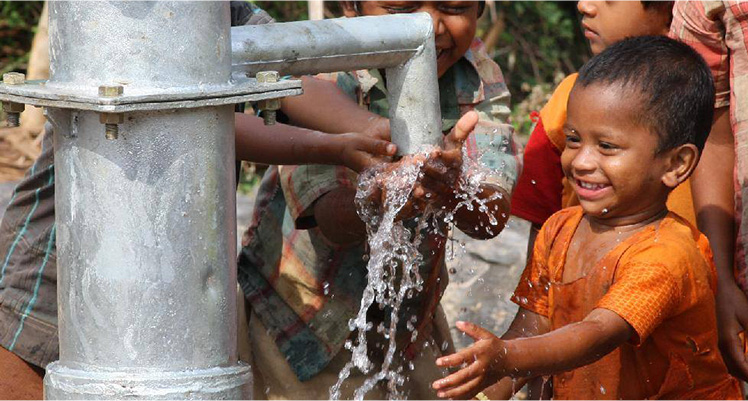
Give Clean Water
It may sound simple, but each well drilled transforms an entire village of 750-1500 people in an unreached region of the world. This changes the community’s health forever. By leaving the village with infrastructure and support for maintaining the well, clean water will continue flowing for generations to come. We also drill wells deep enough into the aquifer to run consistently throughout both the rainy season and the dry.
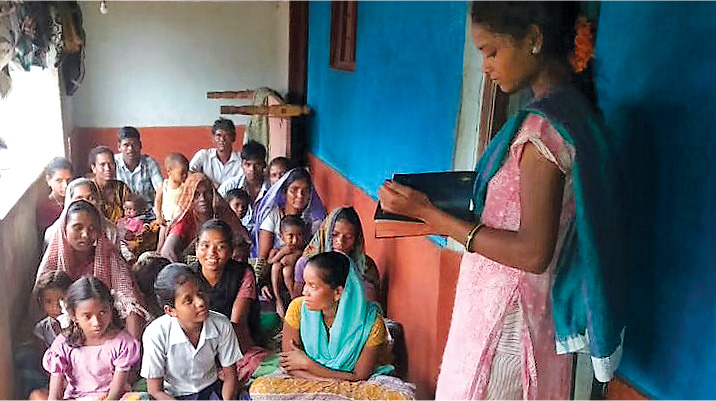
Offer Education
When a new water well is drilled in a village, almost immediately, children can return to school. With clean water comes improved health which leads to more days in school. And when this clean water is accessible, there is enough time for all children, boys and girls, to attend their classes. More educational opportunities leads to better economic prospects. Better economic prospects lead to more stable families in the future. To put it simply, giving a village clean water breaks the cycle of poverty by making education possible.
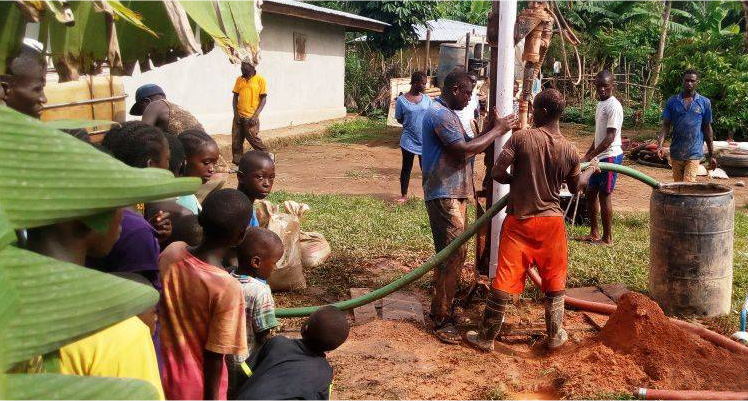
Empower Locals
It is our core belief to not do for others what they can do for themselves. It is for this very reason that we are committed to using indigenous drilling crews. It supports the local economy by providing jobs and giving our crew members the ability to provide for their families. And honestly, they are better able to serve the villages we are reaching. They understand the language, and they understand the culture to build trust within the villages we serve. To learn first-hand what working as a member of the drill crew means to our employee and his family, read Saturday’s story here.
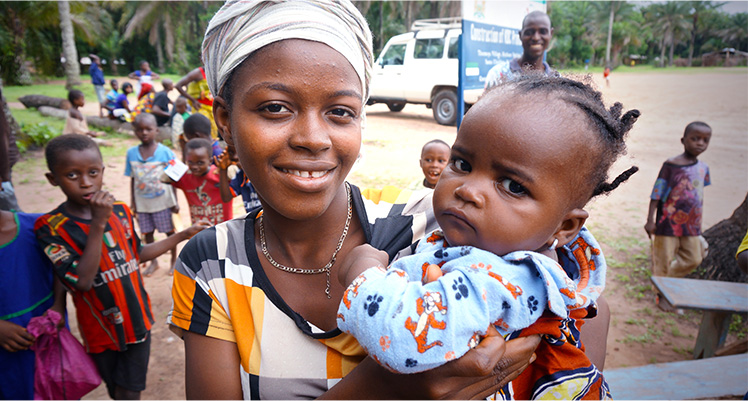
Disrupt the Statistics
In most of these villages, one of every three children die before nine months of age due to health issues associated with contaminated water. The foundational need for clean water literally saves 10-20 lives every year in a village.
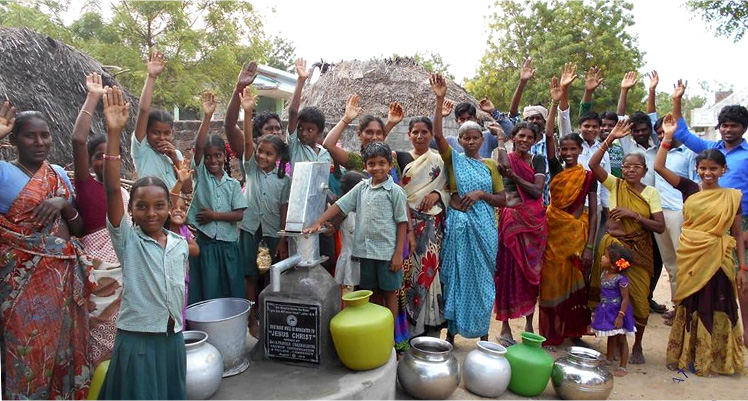
Spiritual Transformation
There’s one more point of impact, and it’s the most important one. In everything we do, we believe we exist first and foremost to bring God’s love to people through a relationship with Jesus Christ. Understanding that Christ’s love is what drives us, empowers us, and challenges us to care for others, we’re committed to sharing and showing His love – the true water of life – in everything we do. With every person we come in contact with, we provide for not only their physical needs through clean water, but their spiritual needs as well.
It’s why, despite how much investment we’ve made in drill rigs, drilling teams, and well-drilling infrastructure, we’ve made an even bigger investment into our network of pastors across the regions we touch. From identifying and training to equipping and supporting, we’ve cultivated a growing relationship with thousands of pastors who know the area, live in the villages, and are indigenous to the area. These pastors are focused on building discipleship, community, and ongoing support to help those we reach with the Gospel grow in their walk with God and multiply our impact by sharing Christ with others.
Water of Life
How Wells Are Drilled
The well drilling process is a fairly simple one but may vary depending on the terrain of the area we are working in. In general, here are the steps we follow to give clean water through a new well:
The Well Drilling Process
- Complete a village assessment by mapping out where villages are currently gathering water and determining if this source is available year-round. We also take a rough estimate of village population and if there is a church serving the area.
- Once it is a village’s turn for drilling, we prepare the site. This includes selecting the best location for the well, clearing the site, and unloading the equipment.
- The next day, drilling begins. We typically wet drill a bore hole until we hit water or rock. If we hit rock first, we switch to air drilling by using a down-the-hole-hammer to break apart the rock until water is hit.
- Once water is hit, a larger diameter hole is drilled and flushed clear of debris. 4” PVC pipe casing is lowered into the hole with slots cut at the bottom for water to flow through and a gravel pack is added to filter the water as it enters the casing from the aquifer. The remaining hole around the casing is then back-filled.
- The drilling process stirs up a lot of sediment in the aquifer that needs to be cleared out until the water from the well runs clear. At first this is done by hand, but later an air compressor speeds up the job.
- The crew then levels and secures the top of the well for a concrete pad. They also create a sanitary seal around the casing by cementing the top several feet of the PVC pipe in concrete. This seal is left to dry overnight but not before a precise amount of bleach or chlorine is added to the well to sanitize everything from the drilling process.
- Lastly, the concrete apron is added to surround the well and the hand pump is added. Everything is left to dry overnight, and the next day it is ready for village use.
If you are interested in seeing an in-depth look at the drilling process, please check out our blog on the well drilling in Brooklyn Corner Community, Liberia.
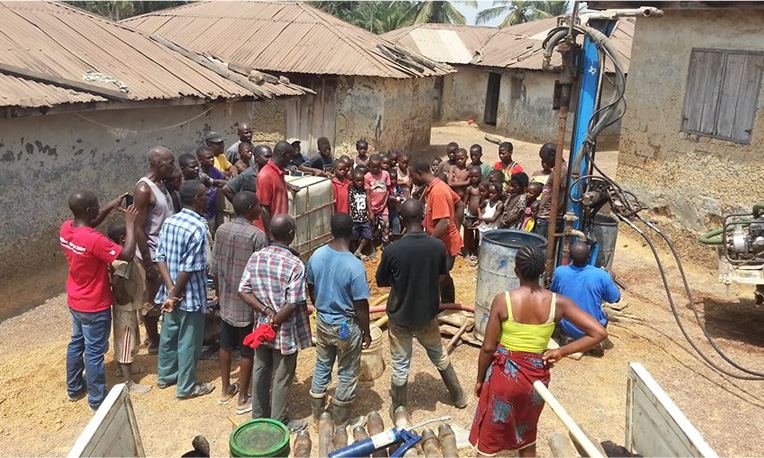
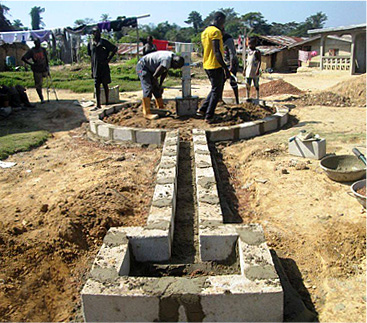
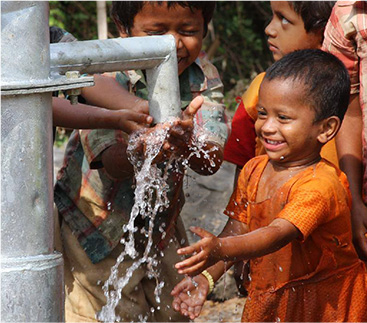
Sustainability
Many water organizations dig wells, often around 25-50 feet deep, providing clean water… for a few years. But wells at that depth face dangers of contamination contracted from the seeping through of contaminants from the soil above over time, and often run dry. Our wells are drilled deep into the aquifer, sometimes drilling through deep rock, to ensure clean water will continue to flow through both rainy and dry seasons for decades to come. Many times, in fact, we’ll drill over 300 feet down. It’s a large difference, and one with large impact—our wells last between 25 and 100 years with minimal maintenance completed by the local villages.
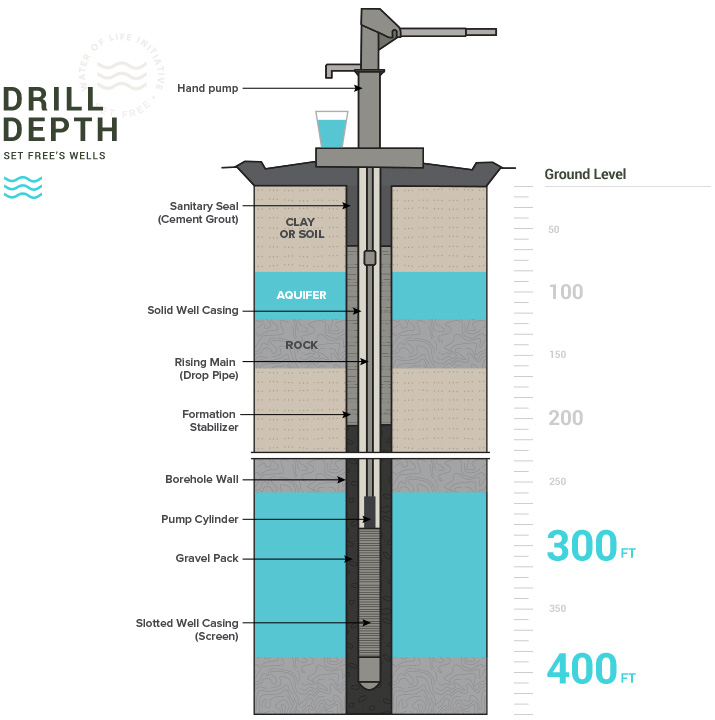
Well maintenance by the village is critical over the life of a well. Often a well can break because of something as simple as a seal that is readily available and affordable in most local markets. But if the village doesn’t have the knowledge base or tools to make the repair, their well sits useless as villagers return to collecting water from their previous, contaminated water source. This is not what we’re setting out to accomplish. Clean water is meant for generations – not a moment. So, before our drill crews leave, the well is entrusted to a village leader who is trained and equipped to make needed repairs. If something comes up that that person is unable to handle on their own, they can reach out to our network of pastors and drill crews who are trained to repair the wells.
Hundreds of thousands, if not millions, of borewells have been drilled over the years by various organizations. Inevitably, not all of these wells are currently in working order. Some will not be able to be repaired because the water table may have shifted due to changing populations and climate, or the borehole itself may have collapsed. For these villages, a new well is required. But for many villages, all their well needs is a little work. And the most economical way for us to bring clean water to a village that has a broken well is to repair their existing well. It’s another small point of difference with a big impact. In Africa alone, we average over 300 repairs to existing wells – mostly wells drilled by others – to bring clean water again to thirsty villages.
Sharing God’s love
How Clean Water Opens Doors to Make Disciples
We believe that meeting the physical need by providing clean water, it opens the door to sharing the gospel of Jesus Christ. Glorifying God and making disciples is the reason behind everything we do. Here’s how it happens:
- First, the drill team informs the village that this well is not given by them but by Jesus Christ.
- Following this, villagers are invited to join the crew and pastor partners for morning and evening Bible studies. A screening of The Jesus Film also occurs one day during the drilling week.
- A long-term relationship is nurtured through the continuous presence of pastor partners and a church is planted.
- Ultimately, the goal is for the newly planted church to multiply into more churches in new areas so that disciples create new disciples.
It’s a proven strategy that’s working. Of the 977 villages that have received a well so far in our current district in India, (92.72% Hindu) every single village has seen a church established and a pastor placed. And of the 977 villages, over 300 have become “Christ villages” meaning they are now at least 80% Christian and the village leadership is 100% Christian.
 977
977 with a well
 327
327 Villages”

